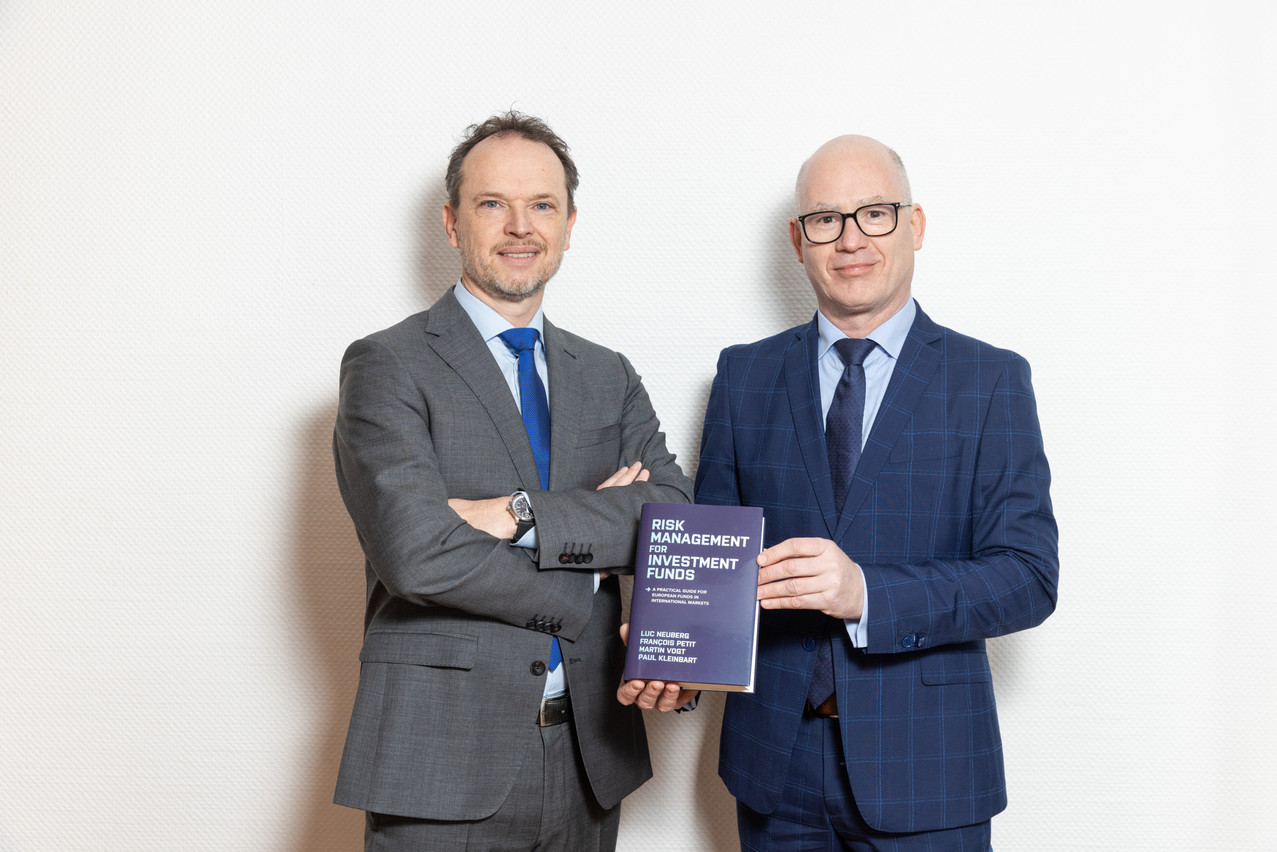The European investment fund market is worth around €22trn, of which nearly . It is a market that is set to grow even more, due to the ageing of the population and the need for supplementary pensions that this implies, and also due to the financing of the transition to a green and sustainable economy. The idea behind the book is, according to its authors, to “describe the environment of European funds and the techniques commonly used in managing their risks. ‘Risk management for investment funds’ is a comprehensive, yet practical guide.”
The idea of writing such a manual dates back seven years and was based on the observation that “for years, risk management has been a key issue for the fund industry. However, its operating principles are poorly documented. You realise this not only as a professional but also when, as is the case with each of the authors, you are involved in teaching risk management,” said François Petit. “There are risk management bibles for banks, but not for funds.”
attributed the gap to the lack of maturity of the subject. “Risk management has developed a lot over the past 15 years after the Lehmann Brothers crisis. With the accumulation of doctrine and practice, the maturity threshold has been reached for the creation of a comprehensive reference work. This would not have been possible 10 years ago.”
Authors’ diverse backgrounds
Such a project required a huge investment. For Neuberg, the project’s promoter, “the solution that emerged was that of a four-way co-authoring process, even if it is complicated. We come from different backgrounds--specialists, regulators and academics--and we inevitably have different visions. That is the richness of the book and the difficulty of linking these three backgrounds.”
The authors? Luc Neuberg is the chairman of the board at Alrim, the Luxembourg association for risk management. He is also a founding partner of Fair Cost Index. Neuberg is active in various committees in the financial sector, notably at the CSSF, Luxembourg’s financial regulator.
Petit heads a division of the CSSF, which is dedicated to the supervision of investment fund managers. He was previously head of risk and compliance for Amundi Luxembourg.
Martin Vogt is a professor of business intelligence at the University of Applied Sciences in Trier and a board member of several funds with different strategies.
And Paul Kleinbart, who is a trainer in financial services and risk management both at university level and for professional training institutes. “Four financial experts with diverse and complementary backgrounds: they combine experience as former risk managers, professors, lecturers or trainers in academia or professional circles and as experts with a financial supervisory authority.”
Read also
Holistic approach
What is in the book? “The book recaps the environment in which European funds operate and describes the regulatory requirements that apply to these funds and their managers with regard to risk management. In this context, it is intended to be a practical guide to setting up a risk management function, its tasks and the methods and techniques it can use to accomplish these tasks. It is with this in mind that the book has been enriched with numerous examples,” said Petit.
“It is not only aimed at risk managers, it can also be useful for all governance and supervisory functions: managers, directors, auditors, regulators. It is also useful for investors, who will find it an important source of fundamental knowledge, understanding and decision support,” added Neuberg.
The book is also aimed at investors and students “who need to know about the world of investment funds and their business.”
Will the initiative find its audience? “We were very happy to see the good reception. In Luxembourg, Marco Zwick, director at the CSSF, quickly agreed to preface the book and Alfi [Association of the Luxembourg Fund Industry] members reviewed some of the chapters. At the international level, we have also received support from leading personalities: Philippe Jorion, who is the author of the FRM [financial risk manager] reference book, Tanguy van de Werve, director general of [the European trade group] Efama, Marti Subrahmaniam, professor at the prestigious Stern School of Business in New York, and Michael W. Roberge, CEO of the MFS Group, received our first chapters and then gave us their support in return,” stated Neuberg. He is pleased with the enthusiasm that this ‘Luxembourg’ initiative has generated.
Petit stated: “This support comes in particular from the fact that there is a lack of reference works. I have to say that the enthusiasm of the publisher and the support mentioned clearly played a role in our motivation. Moreover, risk management is definitely an important subject in and for the Luxembourg financial centre, particularly in the area of investment funds. It is important that expertise in this area is present in Luxembourg and continues to develop. All the players involved are aware of this.”
“” is published by McGraw Hill. It will be available on 10 February.
Read the original French version of this article on the site. This article was published for the Paperjam+Delano Finance newsletter, the weekly source for financial news in Luxembourg. .
